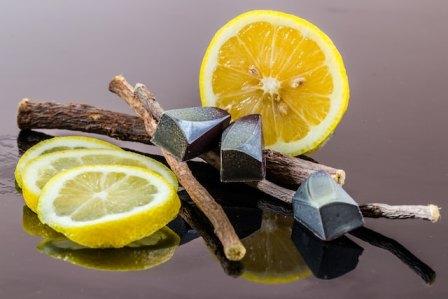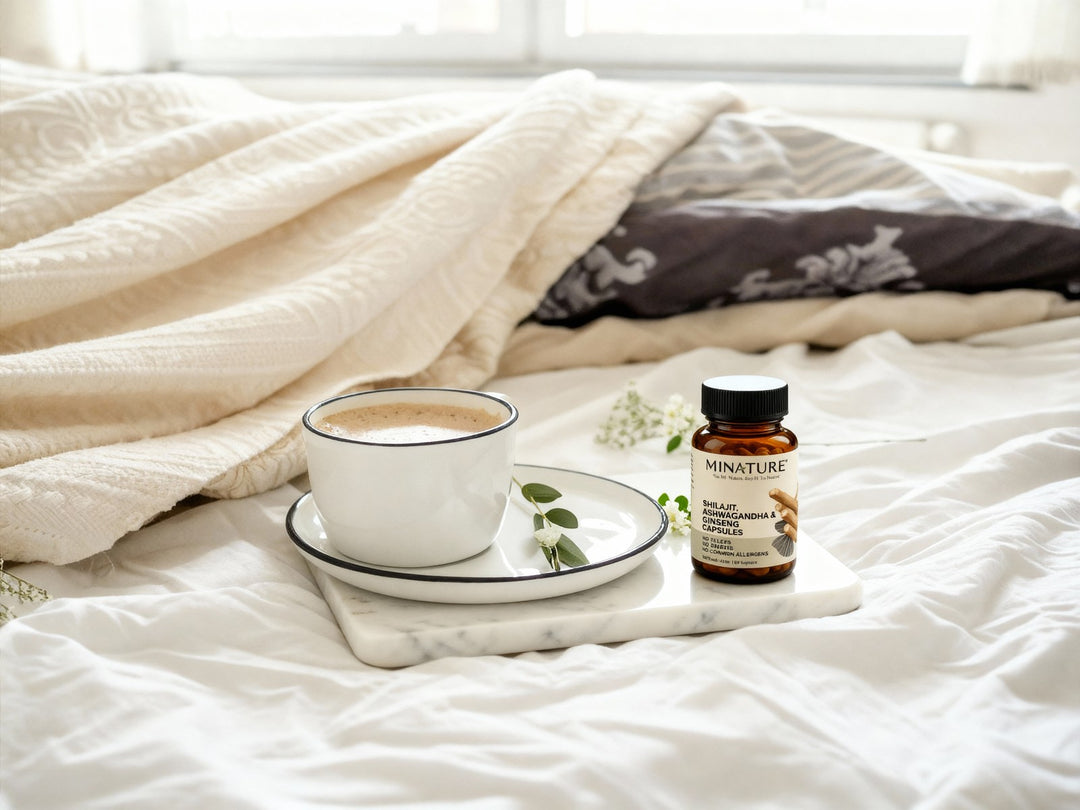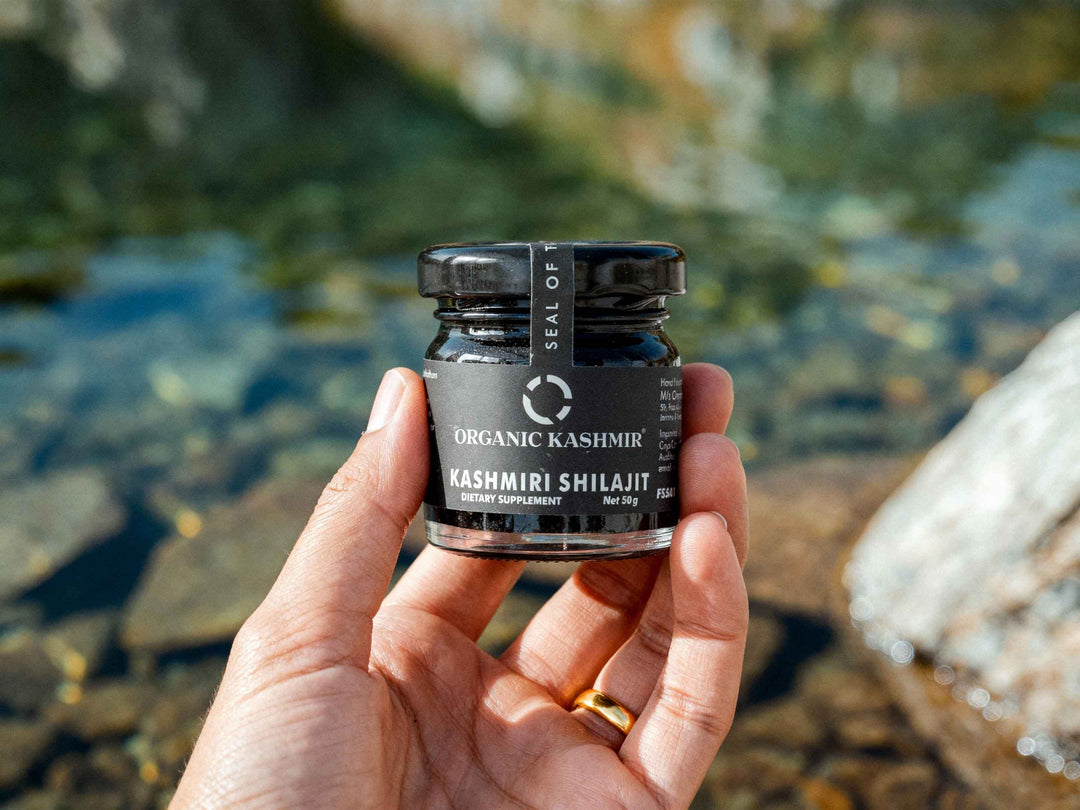Mulethi: The Sweet Herb with Health Benefits

Botanical Name: Glycyrrhiza glabra
Family: Leguminosae
Medicinal Parts Used: Roots and Rhizome
The name Glycyrrhiza comes from Greek roots, where "glykos" means “sweet” and "rhiza" means “root.” It is commonly known as licorice, or sweet wood, or "mulethi."
Mulethi root extract is frequently used as a natural flavoring in various dishes, sweets, beverages, desserts, and products like candies, baked goods, chewing gums, ice creams, and soft drinks due to its sweet taste. The main compound, Glycyrrhizin, found in Mulethi root, is 50 times sweeter than sucrose, making it a potential sweetener. Traditional healers have employed it, for various purposes, including for its diuretic and choleretic effects, as well as for insecticide use. It has been used to address issues like coughs, colds, and painful swellings. Mulethi is known for its strong rejuvenating (Rasayana) and aphrodisiac (Vajikaran) qualities, which play a key role in increasing vitality and improving fertility.
MORPHOLOGY AND HABITAT:Mulethi is a perennial shrub that grows up to 6 feet tall. It produces lilac-colored flowers and bean-like pods with 3-4 seeds. The roots are long, brown, and wrinkled, with a yellow interior. Leaves are conjoint, typically with 10-17 leaflets. The flowers are small and range from pink to purple. Its fruit consists of oblong pods with 2-3 kidney-shaped beans. Licorice is grown in temperate zones, and its runners and roots are harvested for various uses. It is found in the Mediterranean and certain parts of Asia and cultivated in several countries, including India, China, Spain, Iran, Russia, and Italy.
SANSKRIT SYNONYMSYashtimadhu, Madhuka,Yashtyahva, Madhuyashti - has sweet root and stem
Klitaka – gives relief in male infertility
According to Bhavprakash, there are 2 varieties:
- Yasthimadhu
- Madhulika : It is found in water sources.
The sweet taste is attributed to glycyrrhizin, glycyrrhetic acid, while its yellow color comes from flavonoids. It has isoflavones with antioxidant and estrogen-like properties. Nutritionally, it provides triterpenes, saponins, flavonoids polysaccharides, simple sugars, proteins, amino acids, essential minerals (calcium, potassium, etc.), and several vitamins (B1, B2, B3, B5, E, and C). Additionally, it contains pectins, starches, resins, and gums, making it a valuable and diverse plant with various potential health benefits.
AYURVEDIC COMPOSITION:|
Taste (Rasa) |
Madhura (Sweet) |
|
Main Quality (Guna) |
Guru (Heavy) & Snigadh (Unctuous Or Oily) |
|
Potency (Virya) |
Sheeta (Cold) |
|
Resultant (Vipaka) |
Madhura (Sweet) |
|
Therapeutic Effect (Prabhava) |
Rejuvenation & Supplement |
|
DOSHA KARMA (Effect on Humors) |
|
|
Dhatu (Tissue) Effect |
All – Rasa, Rakta, Mamsa, Medas, Asthi, Majja & Shukra |
CLASSICAL CATEGORIZATION:
- Jeevaneeya: Herbs that enhance one's lifespan.
- Sandhaneeya: Herbs that assist in the recovery of bone fractures and wounds.
- Varnya: Herbs that promote a healthier skin complexion.
- Kanthya: Herbs that improve vocal quality.
- Kandughna: Herbs that relieve itching sensations.
- Chardinigraha: Herbs that provide relief from vomiting.
- Shonitasthapana: Herbs that control bleeding.
- Mutravirajaneeya: Herbs that restore the normal color of urine.
- Snehopaga: Herbs used in Snehana, a preparatory procedure before Panchakarma treatment.
- Vamanopaga: Herbs used in Vamana (emesis) Panchakarma treatment.
- Asthapanopaga : Herbs used in Basti Panchakarma treatment, which involves rectal enema with decoctions.
MULETHI IS KNOWN FOR:
Enhancing Digestive Health:- Mulethi is known for its ability to support and improve digestive function and issues such as gas, bloating, constipation and indigestion.
- It stimulates appetite and facilitates efficient absorption of nutrients.
Nurturing Respiratory Well-being:
- Mulethi serves as a potent remedy for a wide range of respiratory ailments, including common cold, persistent cough, and asthma.
- It works by thinning and loosening mucus in the respiratory passages, making breathing more comfortable and promoting lung strength.
Managing Gastric Health:
- Mulethi's remarkable anti-inflammatory properties contribute to soothing stomach discomfort, reducing acidity, and inhibiting the growth of the troublesome H. pylori bacteria.
- Its natural antacid qualities make it a valuable tool in case of gastritis.
Supporting Weight Management and Regulating Cholesterol:
- Mulethi aids in weight management by curbing appetite and creating a feeling of fullness.
- It also plays a role in lowering LDL cholesterol levels, and enhancing metabolic processes.
Facilitating Ulcer Healing:
- Mulethi is notably effective in promoting the healing of both oral and gastric ulcers.
Balancing Blood Sugar Levels:
- Mulethi actively participates in the regulation of blood sugar levels, facilitating the production of insulin and helping prevent starch from being converted into glucose.
Promoting Oral Health:
- Mulethi is a valuable asset for maintaining oral hygiene and for warding off dental issues like cavities and gum problems.
Nourishing Liver Function:
- Mulethi is beneficial in supporting optimal liver function and detoxification processes.
- It can be harnessed to address various liver conditions and enhance liver health.
Enhancing Cognitive Abilities:
- Mulethi contributes to improved cognitive function, including memory, focus, and problem-solving skills.
- Its stress-reducing properties are particularly beneficial for mental well-being.
Regulating Hormones and Women's Health:
- Mulethi assists in maintaining hormonal balance, providing relief from menstrual discomfort.
- It is especially valuable for postpartum women.
Boosting Immunity:
- Mulethi enhances overall vitality, strengthens the immune system, and reduces susceptibility to stress.
Elevating Skin and Hair Health:
- Mulethi promotes skin health by addressing conditions like eczema and acne.
- It supports hair growth and helps prevent premature graying.
HOW TO USE:
- Sore Throat Relief: Mix 3 gms of Mulethi root powder, 2 gms of Sitopaladi churna, and 1 teaspoon of honey in lukewarm water, take it twice a day to ease coughing and throat irritation or simply chew on Mulethi root.
- Cough and Cold: Prepare a Mulethi decoction by boiling Mulethi sticks in water. Consume it multiple times a day to get relief in cough and cold symptoms.
- Gastritis Relief: Combine Mulethi powder with Amla, Coriander, Giloy, and Nut grass powder to get relief in gastritis.
- Mouth Ulcers: Gargle with licorice water or tea to reduce pain and swelling from mouth ulcers.
- Ulcerative Colitis: Consume a mixture of Mulethi powder, Amla powder, Vankshalochana powder, and Giloy sattva powder by infusing it with honey or water.
- Memory Enhancement: Consume 2 gms of Mulethi powder with warm milk to boost memory and prevent cognitive diseases like Alzheimer’s, epilepsy, etc.
- Skin Radiance: Create a face pack with 1 tsp each of Mulethi and Amla powder mixed in rosewater or raw milk for enhanced skin radiance.
- Dry Skin Treatment: Blend 2 tsp of Mulethi powder with 10-15 drops of Kumkumadi tailam for diminishing blemishes and improving complexion with dry skin.
- Hair Growth and Care: Apply a hair pack made from 2 tsp each of mulethi, haritaki, henna, reetha powder and 1 tsp of almond oil, and castor oil into your scalp and rinse it after few minutes with water and mild cleanser. Use it once a week to promote hair growth.
- Oral Health: Improve dental health by using dry Mulethi powder for brushing or consuming or gargling with Mulethi water in the morning.
For overall health benefits, following preparations can be used:
Mulethi Tea :- Boil water.
- Add 1 Mulethi root and 1 teaspoon of grated ginger, simmer for 5 minutes.
- Introduce 1 teaspoon of tea leaves, simmer for another 5 minutes.
- Add 1 teaspoon of milk and sugar to taste.
- Boil for an additional minute.
- Strain the tea.
Ingredients:
- 3 grams of coarse Licorice (Yastimadhu) powder.
- 25 ml of milk.
- 100 ml of water.
Procedure:
- Take 3 grams of Licorice powder in a vessel.
- Add 25 ml of milk to the vessel (8 times of powder).
- Include 100 ml of water (4 times of milk).
- Put the vessel on the stove and heat the mixture over moderate heat.
- Continue heating until all the water evaporates, leaving only the milk. This ensures that 100 ml of water evaporates, and 25 ml of milk remains.
- Filter the contents to separate the coarse Licorice powder from the milk.
- Consume the warm milk.
This process allows the medicinal properties of Licorice to be absorbed into the milk while reducing its irritant or nauseating qualities. It is given especially in case of gastritis or other stomach issues (empty stomach in the morning).
SIDE EFFECTS AND PRECAUTIONS:
- Individuals with a history of renal failure, hypertension, or those using digitalis preparations should avoid licorice.
- It can affect renin activity and lead to hypoaldosteronism, impacting hormonal balance.
- Pregnant and breastfeeding women should avoid licorice due to insufficient safety data.
If you experience severe side effects, an allergic reaction, or suspect an overdose, seek immediate medical attention.
Always consult your healthcare provider for specific warnings and precautions related to any medication or treatment, as individual circumstances can vary, and they can provide personalized guidance based on your health and medical history.
- Ayurvedic-Pharmacopoeia-of-India-part-1-volume-IX
- Damle M. Glycyrrhiza glabra (Liquorice) – a potent medicinal herb. International journal of herbal medicine 2014;2(2):132-136.
- A Short Review on Ayurvedic Herb - Mulethi (Yashtimadhu) by Shivani Patil
- Bhavprakash nighantu by prof. K.C. Chunekar,:verse 145- 46, edition of 1998
- https://www.ncbi.nlm.nih.gov/pmc/articles/PMC7124151/
- https://www.netmeds.com/health-library/post/mulethi-licorice-powder/
- https://www.planetayurveda.com/library/yastimadhu-glycyrrhiza-glabra/
- https://www.easyayurveda.com/2012/12/08/licorice/
- https://pharmeasy.in/blog/ayurveda-uses-benefits-side-effects-of-licorice-mulethi/
Published By Rasayana Limited. All Rights Reserved. No part of this publication may be reproduced or transmitted in any form or by any means, electronic or mechanical, including photocopying, recording, or any information storage and retrieval system, without permission in writing from the publisher.
WRITTEN BY: Dr. Monika Mittal (Qualified Ayurvedic Dr)EDITED BY: Debleena Chatterjee
PHOTOGRAPHY BY: Massimo Adami






